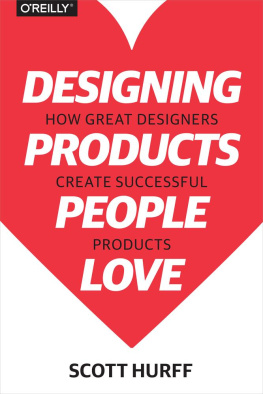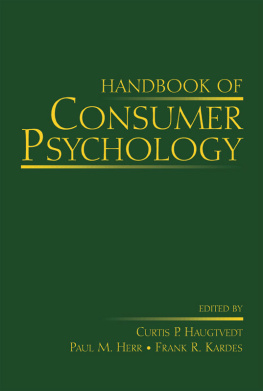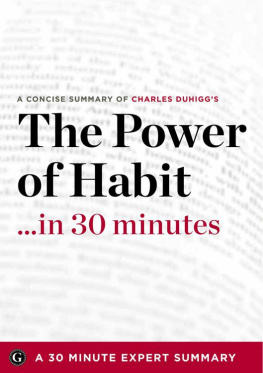Your alarm wakes you and you stagger to the kitchen to brew a cup of coffee. You reach for your smartphone to map the traffic to work, check the weather and get an update on your friends. You perform these activities automatically, with little thought. Yet, if you find Keurig, Weather.com or Facebook habit-forming, thats not an accident. Getting you to incorporate its products and services into your habitual routine is the ultimate goal of every business. Consumer psychology expert Nir Eyal developed the Hook Model to put this brass ring closer to product developers grasp. He created his four-step model by researching the traits that successful products have in common, drawing insights from behavioral psychology and neuroscience, and extrapolating from his personal experience in gaming and advertising. While his model seems particularly apt for digital products, getAbstract recommends this user-friendly text to marketers, designers and entrepreneurs across product categories.
Summary
Habit-Forming Products
You carry out habitual behaviors with little or no thought, but when your use of a product or service like a smartphone or Twitter becomes a habit, the company behind it scores a meaningful win. Marketers try to engineer the customer experience so that it becomes ingrained because a products success requires loyal, habitual users. Smartphones, tablets and game consoles give consumers around-the-clock access and connectivity. Marketers have two tools that constant entre and detailed personal information gleaned through data mining for propelling the buyer behavior that most benefits them: Forming a habit.
The Habit Advantage
Investors calculate a companys customer life-time value (CLTV) to determine its overall value. CLTV is the amount of money a business expects to make from a single customer during his or her lifetime. The more habit-forming a product is, the higher its CLTV. As consumers incorporate a product into their daily lives, they become less resistant to increases in its price. Loyal users tell their friends about products they routinely enjoy and recommend them via social networks. Word-of-mouth advertising is credible and cheap.
Like all technologies, recent advances in the habit-forming potential of digital innovation have both positive and negative effects.
Companies marketing habit-forming offerings stave off competition. New entrants find it difficult to change buyers embedded behaviors, even when they produce a superior product. For example, keyboards still use the QWERTY configuration, designed in the 1870s for the first typewriters. Better layouts come to market, but they dont catch on. Once people become proficient at touch typing on a QWERTY keyboard, they are loath to learn a new, even if more efficient, system.
The technologies we use have turned into compulsions, if not full-fledged addictions.
The Habit Zone is the sweet spot between the frequency of a behavior and its perceived utility, the ease and convenience of continued use. Products and services fall into two metaphorical categories: vitamins and painkillers. Vitamins are nice-to-have, satisfying products that users can live without. People feel good about taking vitamins but dont feel terrible if they miss a day. People feel pain if a painkiller-category product is out of reach. When something becomes a habit, doing without it hurts. For example, some consumers cant imagine a morning without coffee or a day without Twitter.
The Hook Model
All businesses can use a four-step process the Hook Model to hook consumers on their offerings. People who become hooked will use that offering repeatedly, making advertising and marketing less necessary. The four phases of this model are:
1. Trigger: The Actuator of Behavior
Triggers spark your behavior. Theyre cues telling people what action to take. Triggers are either external or internal. When you see, smell, taste, hear or touch an external trigger, it prompts a reaction and points clearly toward a particular act. For example, the login button on a home page is an online trigger. External triggers fall into four categories:
- Paid Advertising consists of paid triggers. Companies buy advertising to attract new users to convert them into loyal customers.
- Earned Companies invest time and energy to secure earned triggers. Publicizing an event or producing a video in hopes that it will go viral are earned triggers.
- Relationship Word-of-mouth recommendations from one person to another, or via social networks, are relationship-based triggers.
- Owned With a users permission, a company could provide reminders. For example, a smartphone owner might permit an app company to send an upgrade notice about its app.
Hooked users become brand evangelists megaphones for your company, bringing in new users at little or no cost.
Internal triggers are subconscious associations between an action or thought and an emotion. Thus, boredom makes you check your email. People form habitual reactions in response to the tiny stressors they experience through the day. Businesses exploit users pain by positioning products or services as oases of relief. Consumers habitually reach for products and services that provide comfort or solve their problems. Businesses must understand the internal triggers that cause people to use their products so they can tailor external triggers that propel users to engage.
2. Action: The Behavior Done in Anticipation of a Reward
Action is what a trigger seeks to spur. An action is how you behave because you expect an award. In the context of habits, people act instinctively, with almost no deliberate thought. Dr. B.J. Fogg conducted research at Stanford University to determine what instigates people to act. You can express his Fogg Behavior Model in the formula B=MAT that is, Behavior occurs in the presence of sufficient Motivation, and Ability plus a Trigger. For example, you hear your cellphone ring. If you buried it at the bottom of your handbag or briefcase, you may let the call go to voice mail. Perhaps your phone is set on silent and you never hear the ring. Some element of the formula is weak or missing, preventing an action from taking place.
Companies that successfully change behaviors present users with an implicit choice between their old way of doing things and a new, more convenient way to fulfill existing needs.


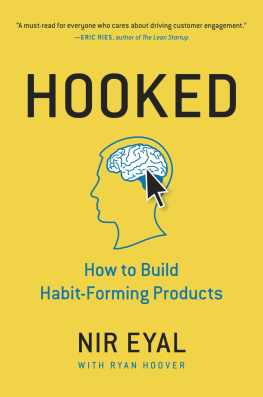
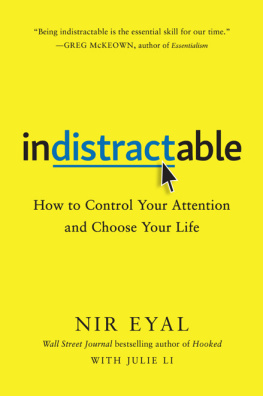



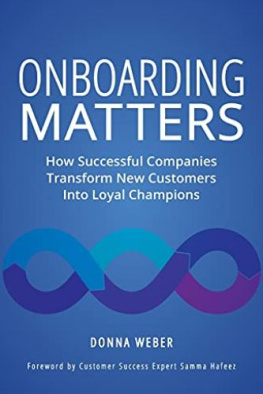
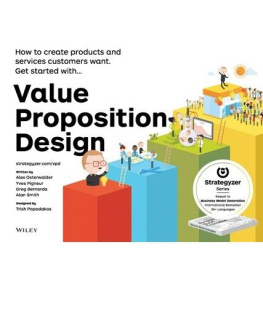
![David C. Evans [David C. Evans] - Bottlenecks: Aligning UX Design with User Psychology](/uploads/posts/book/124056/thumbs/david-c-evans-david-c-evans-bottlenecks.jpg)
